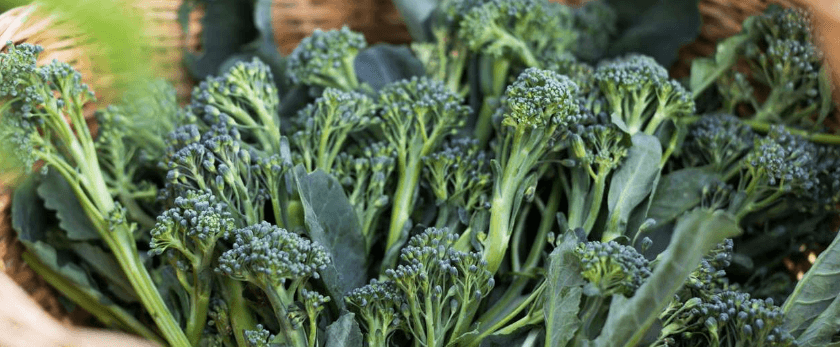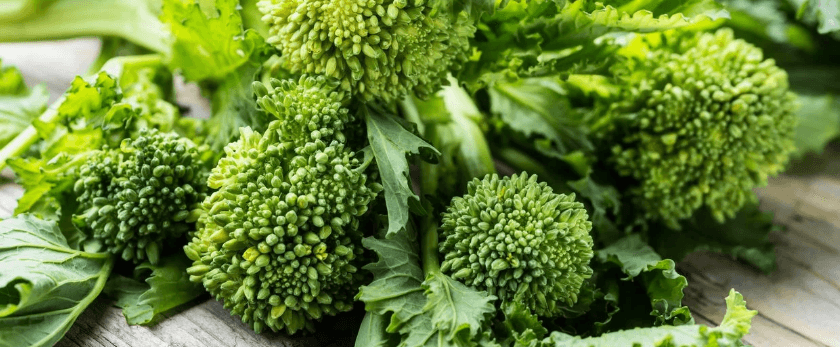Broccoli rabe, also known as rapini, is a delicious and nutritious vegetable that is gaining popularity in home gardens. Not only is it easy to grow, but it also offers numerous health benefits and is a great addition to any eco-friendly lifestyle. In this article, we will discuss how to grow broccoli rabe in a sustainable way, from caring for the plant to common problems and solutions.
Caring for Broccoli Rabe
Watering
Broccoli rabe requires consistent moisture to thrive, but it is important not to overwater. The best way to water broccoli rabe is to give it about 1 inch of water per week, either through rainfall or manual watering. It is important to water at the base of the plant, avoiding getting the leaves wet, as this can lead to fungal diseases.
Light
Broccoli rabe prefers full sun, but it can also tolerate partial shade. If you are growing it in a hot climate, providing some shade during the hottest part of the day can help prevent the plant from wilting. If you are growing broccoli rabe indoors, make sure to place it near a window that receives plenty of sunlight.
Soil
Broccoli rabe grows best in well-drained, fertile soil with a pH level between 6.0 and 7.0. Before planting, it is recommended to amend the soil with compost or well-rotted manure to provide the plant with the necessary nutrients. If your soil is heavy and clay-like, adding some sand or perlite can help improve drainage.
Fertilizer
Broccoli rabe is a heavy feeder and requires regular fertilization to produce a bountiful harvest. It is best to use organic fertilizers, such as compost or aged manure, to avoid chemical runoff and promote a healthy ecosystem. You can also use a balanced fertilizer, such as a 10-10-10, once a month during the growing season.
Pruning
Pruning is not necessary for broccoli rabe, but it can help promote bushier growth and prevent the plant from becoming too leggy. You can pinch off the top of the plant when it reaches about 6 inches in height, which will encourage side shoots to grow. You can also remove any yellow or damaged leaves to keep the plant healthy.

Best Time to Grow Broccoli Rabe
Broccoli rabe is a cool-season crop and grows best in temperatures between 50-65°F. It can be grown in both spring and fall, but it is important to avoid extreme temperatures. If you live in a warmer climate, it is best to grow broccoli rabe in the fall when temperatures are cooler. In colder climates, you can start growing broccoli rabe in early spring, as soon as the soil can be worked.
Common Problems with Broccoli Rabe
Despite its many benefits, broccoli rabe can face some common problems that can affect its growth and yield. Here are some of the most common problems and solutions to help you grow a healthy and sustainable crop.
Pests
Broccoli rabe is susceptible to pests such as aphids, flea beetles, and cabbage worms. These pests can cause damage to the leaves and stems, leading to stunted growth and reduced yield. To prevent pest infestations, it is important to keep your garden clean and free of debris. You can also use natural pest control methods, such as introducing beneficial insects like ladybugs or using neem oil.
Diseases
Broccoli rabe can also be affected by various diseases, including clubroot, downy mildew, and black rot. These diseases can cause wilting, yellowing of leaves, and stunted growth. To prevent diseases, make sure to plant broccoli rabe in well-drained soil and avoid overhead watering. If you notice any signs of disease, remove the affected plants and dispose of them properly to prevent the spread.
Bolting
Bolting is when the plant produces flowers and seeds prematurely, which can affect the quality and taste of the vegetable. This is often caused by high temperatures or inconsistent watering. To prevent bolting, make sure to plant broccoli rabe in a cool and shaded area and water consistently.
Responsible Disposal Methods
As with any gardening, it is important to dispose of any plant material responsibly to prevent the spread of diseases and pests. If you encounter any diseased or pest-infested plants, do not compost them. Instead, dispose of them in a sealed bag or burn them to prevent the spread. You can also chop up the plant material and add it to your compost pile, as long as it is not diseased.
Conclusion
Growing broccoli rabe is a great way to add a nutritious and sustainable vegetable to your diet. By following these tips and techniques, you can grow a healthy and bountiful crop while also promoting a greener and more eco-friendly lifestyle. Remember to care for your plants, be mindful of potential problems, and dispose of any plant material responsibly. Happy gardening!










